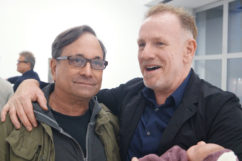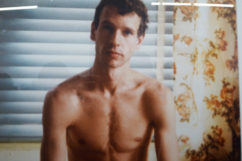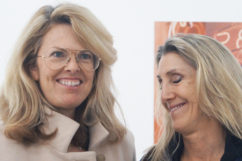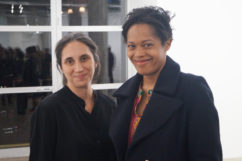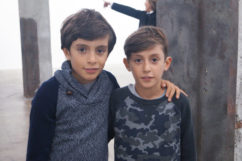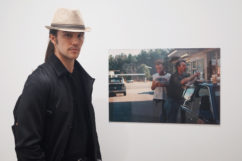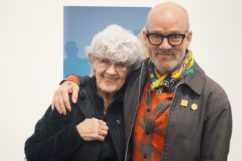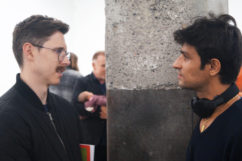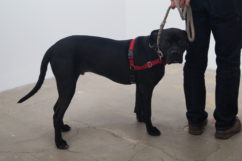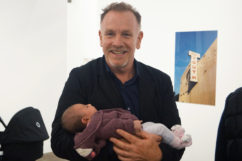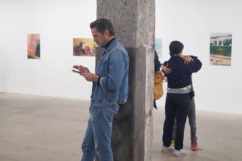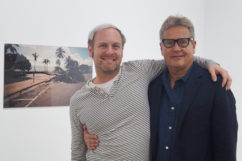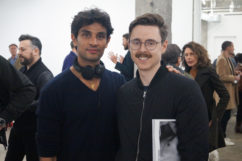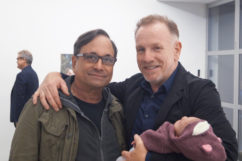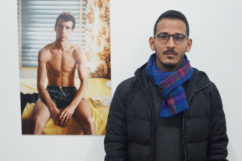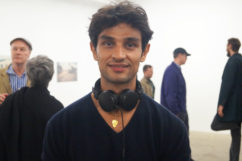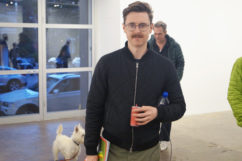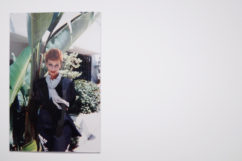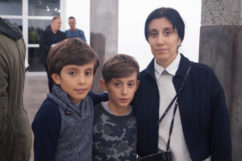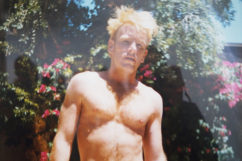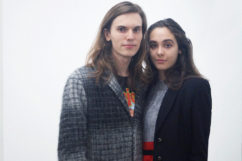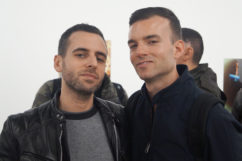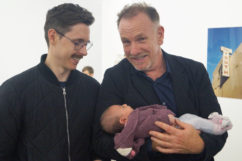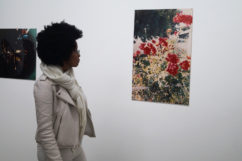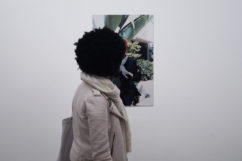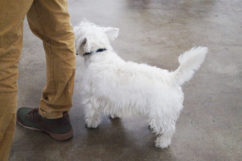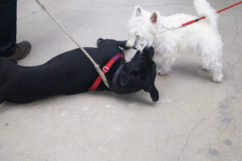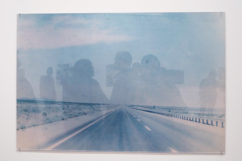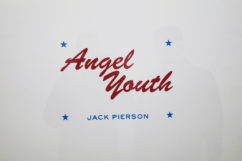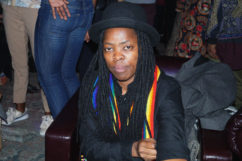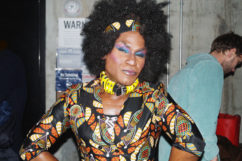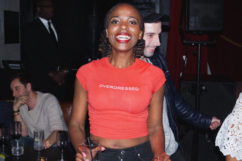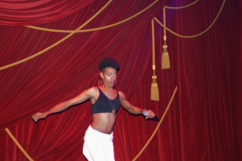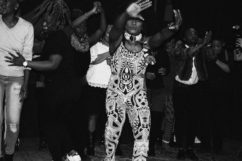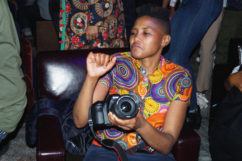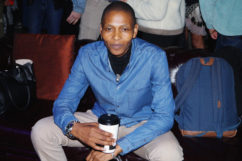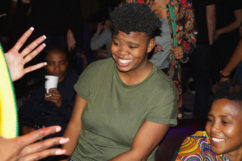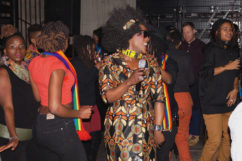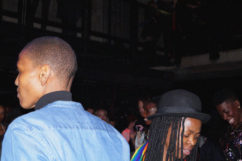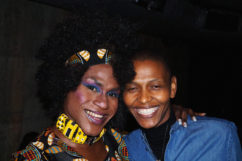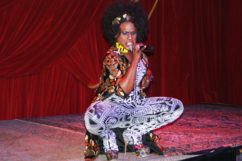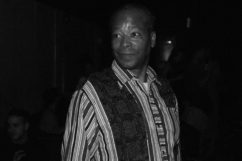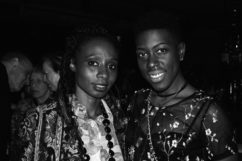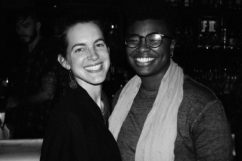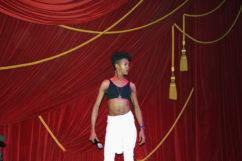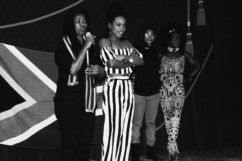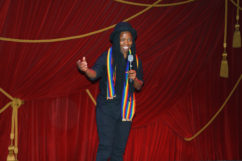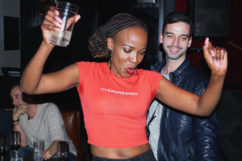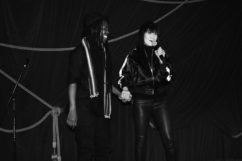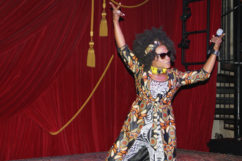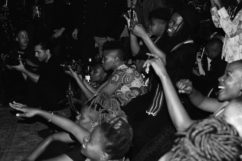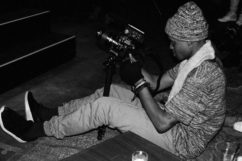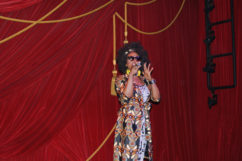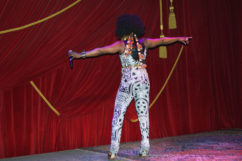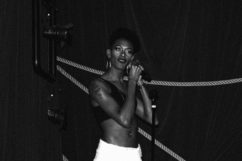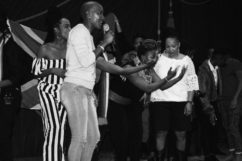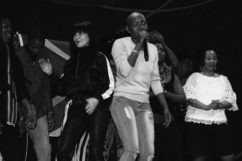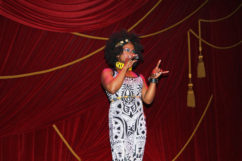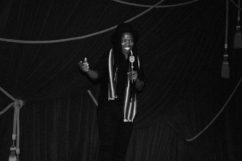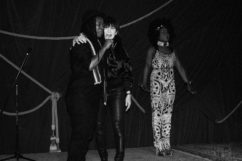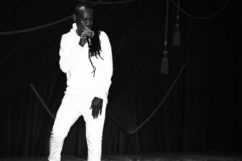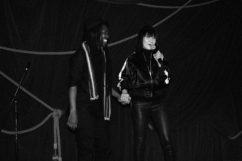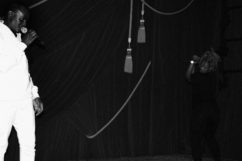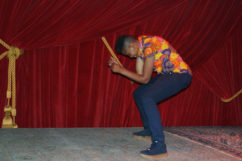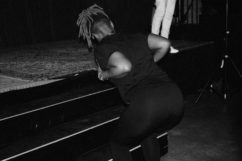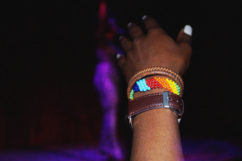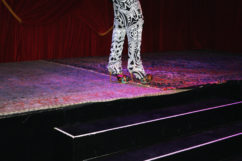Wednesday 11.08.17
Yayoi Kusama – Festival of Life
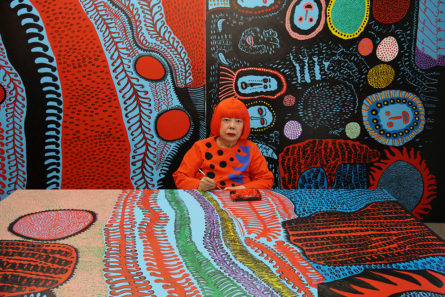
If you haven’t heard of Yayoi Kusama you probably live under a rock. She’s an artist that I’ve been dying to see for years now (she’s been featured at countless galleries and museums all over the world for years) and she’s returned to David Zwirner gallery where her 2013 show made waves with Festival of Life. The show up at Zwirner is catching the eye of nearly every aspiring photographer, artist, gay person, fashion designer, trendsetter and anyone else who thinks they have the most refined taste in the tri-state area. (Trust, just search #infinityroom).
Her work was installed at the Guggenheim for a bit, but much to everyone’s greatest fears, really ridiculous people who are more interested in Instagramming (please don’t do that) the work rather than looking at it ended up damaging one of the mirrored rooms and caused over $800,000 in damages, so it’s no surprise that people are freaking out that the popular artist is back in town — she’s both notorious and sublime.
This exhibition will debut two brand new infinity rooms, so whether you’ve seen the rooms already or not, this is a must-see . Just remember, people from all over the metropolitan area are flocking to see her work, so make sure to be there early so you’re not stuck waiting in line down the block. Last week’s line was too long, so I’ll try again this week.
Yayoi Kusama, Infinity Mirrored Room-Love Forever, 1966/1994. Installation view, YAYOI KUSAMA, Le Consortium, Dijon, France, 2000. …

The photographer Levi Jackman Foster talks “Follow”
Challenging a new generation of young gay trailblazers to recognize the power of a collective
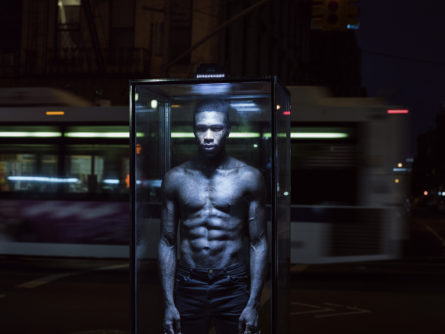
Queer artist Levi Jackman Foster’s first solo exhibition, Follow, at Lytehouse Studio directly addresses a new generation of young gay men who have used objectification and validation-seeking practices as a means of gaining a following on social media. Foster’s approach was not one of judgment, but instead mirrored the awareness of living in a world where a gay man’s relevance is often measured by their likes or followers — beckoning us to examine whether we are fostering positive gay identities or reinforcing negative stereotypes.
The artist’s Mormon upbringing, and subsequent rejection of the faith, was evident in the evocative work — bottles of poppers encased in a row, lined the entrance — juxtaposing the forbidden with innate sexual desire. With the hope of reflecting a generation’s need to “curate their lives to meet surreal social standards,” images of chiseled men in glassed structures were disassociated from their environments as Foster chose to immerse his subjects in rural or urban settings. In a separate room, spectators were invited to step into a glass structure and draw their own conclusions.
A portal-like experience in which spectator and art collide, the exhibition pondered the question, “Where do we go from here?” Foster has admittedly used social media as a powerful tool to evoke his audience with images celebrating sexuality and individuality. Recognizing the obvious advantages of connecting to each other on a social platform, Foster reminded us to maintain a sense of perspective through the often, overwhelming bombardment of information we receive via the internet. …

Saturday 11.04.17
Performa AFTERHOURS with Visual Activist Zanele Muholi
Drinks, music and dancing with the South African photographer

Much to our surprise, Zanele Muholi has stayed largely off America’s fine art radar. A solo show at the Brooklyn Museum reinstated the institutions mission “to create inspiring encounters with art that expand the ways we see ourselves, the world and its possibilities.” The South African photographer’s show “Zanele Muholi: Isibonelo/Evidence” illustrated the violence LGBTQI people face throughout South Africa, where LGBTQI people have continued to battled murder, rape and many other atrocities directed at the community.
Reporting for GAYLETTER Issue 3, Patrick Sweeney wrote: “Taken using only natural light, her spectacular photos are human records that, while referencing official documents, speak to the need to see one’s self represented. ‘I don’t want to be covered,’ Zanele told me. ‘I don’t want to be hidden — I need to be seen.’” With her works now included in the Berlin Biennale, Zanele’s documentarian style portraits are beginning to take root in the larger art circuit, bringing her tender and important work to the larger art audience.
To celebrate her 10 day trip to the States, Performa has partnered with PublicArts at the Public Hotel for Performa AFTERHOURS. “Performa AFTERHOURS is a post-show get-together featuring a range of exciting emerging artists. During the biennial, audiences can join the artists, curators, and organizers of Performa 17 for drinks, conversation, performance, and dancing at New York’s newest quintessential late night space: Public Arts. Evenings draw loosely on Performa 17’s historical anchor, Dada, with artists who are invested in art’s revolutionary possibilities. …

“FOLLOW” OPENING RECEPTION
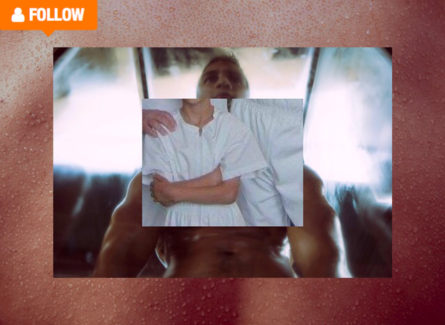
Levi Jackman Foster is an artist whose new show FOLLOW features photography and ready-made objects “to inspect the pervasive self-objectification of modern Men and Gay Men: why they do it, how they do it, and the extremes they will go to for adoration.” That’s a deep summary, but we wanted to hear more so we asked Levi a couple of questions. Levi tells us he’s been planning this show for 3 years, but began shooting 1 year ago. For him this show was a necessity. “I created FOLLOW because I couldn’t hold these thoughts in any longer. It’s like another level of coming out for me. I’m expressing my real thoughts on the social media persona I created. I have a lot to say to, and about, modern men.” He tells us. He is calling the show “Follow” because it’s “focused on self-objectification and validation seeking behaviors in modern men which are heightened in our social media age. “Follow” is a request, a trade, a cliche, a command and a tool. It also has religious significance to me personally having been brought up Mormon and many primary school songs having the lyric “follow” (referring to god, Jesus or prophets) in them. I touch on this in the show.”
It’s a fascinating area to explore. Personally, I am having social media exhaustion. Looking at Facebook is triggering in too many ways and I am questioning if the benefit of staying in contact with friends through it is really worth the negative shit that it also brings. …

Tuesday 10.24.17
Robert W. Richards: Couture Érotique
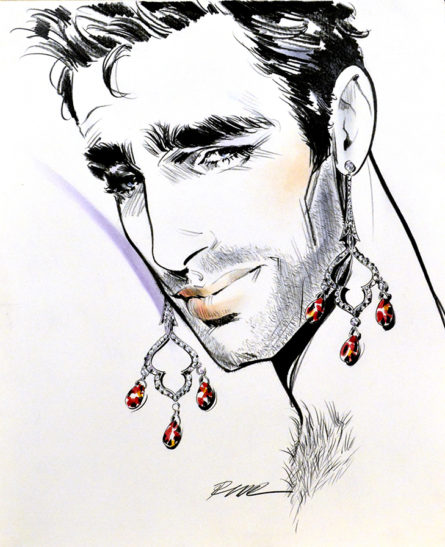
I try to savor the small details that make an outfit worth sharing with the world: the unexpected paillette, some fringe, a sparkly earring, even a tassel or two. These embellishments speak to a soft sensibility, a feminine fantasy of feathers, strings of pearls, and lustrous silks. These elements of accessorizing are devastatingly powerful and act as a channel for escapism or performance in dressing. What’s better is finding these elements in the absence of the clothes they usually accompany. Artist Robert W. Richards, whom we featured in GAYLETTER Issue 1, elevates our understanding of just how glamorous a nude boy can be.
Juxtaposing the hard bodies blindly glorified by the homosexual masses with the fantastic accents of classical opulence is Richards’ game. He writes his own rules by exploring the “relationship between masculine and feminine aesthetics within in the genre of fashion illusion” in his latest show, Couture Érotique.
Ideas of gender and the freedom of expression are not foreign to Robert, who said “Having the courage to wear what a man pleases is the most defining and boldest of male characteristics — true masculinity!”
Robert W. Richard, Pretty in Purple, 2017, ink & gouache on bristol, 11×14 in. Courtesy of the artist.
Robert W. Richards, Man in Sequins, 2017, Graphite on paper, 14×11 in. Courtesy of the artist.
The work is up at the genre-pushing Leslie-Lohman Prince Street Project Space of the Leslie-Lohman Museum of Gay and Lesbian Art. …

Friday 10.20.17
Canon: Photographs by Juan Jose Barboza-Gubo & Andrew Mroczek
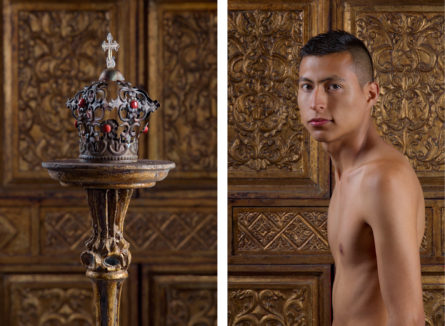
The Museum of Sex is presenting a new exhibition celebrating the Peruvian LGBTQ community — ‘Canon,’ “a multi-part series of photographs and sculptures” by artists Juan Jose Barboza-Gubo and Andrew Mroczek. I just saw a preview of the images that will be on display at this exhibition and it made me tear up, this work is so powerful. It’s a call to action against the violence that the LGBTQ faces in Peru. Another reminder that people like us struggle everywhere in the world.
Featured is ‘Virgenes de la Puerta’ (Virgins of the Door), “a photography series that reimagines transgender women as historical and religious icons inspired by Spanish colonial painting and 19th-century vernacular photography, such as the iconic religious imagery of Santa Rosa de Lima or the Tapada Limeña.” There’s also ‘Los Chicos’ (The Boys), in this series the boys pictured “represent an important, emerging, community within Peru’s culture. Defying patriarchal machismo and the antiquated social mores of masculinity, these young gay men have exhibited tremendous courage and tenacity by allowing themselves to be seen, publicly, as a thriving community within a slowly changing environment of acceptance.” The third series of photographs is the ‘Padre Patria’ (Fatherland), that “reveals the Peruvian landscape as spaces of evidence within the extreme, and rather common, circumstances of violent hate-crimes toward the LGBTQ community, which include rape and murder, as well as domestic violence.”
Also, the show they will premiere the video performance piece ‘Anda,’ featuring “eight gay Peruvian men in varying stages of personal or public acceptance of their sexuality.” …

Thursday 10.05.17
Lucas Castro Pardo’s Eroticum
A conversation with the photographer about his recent book
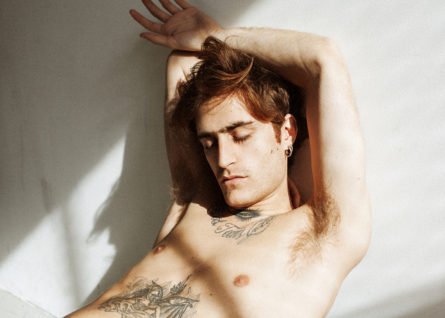
Over the course of the last year, Argentinian photographer Lucas Castro Pardo has been making intimate portraits of men that he sleeps with. Having studied photography in Buenos Aires and then having moved to New York by way of Europe, Pardo has been able channel his life and experiences into his work. His most recent book — his second book — Eroticum is clear evidence of that. Within its pages lies a photographic diary, almost verging on documentation, of Pardo’s sexual encounters. Artful images of penises large and small, cut and uncut, but all handsome. Faces. Beautiful faces. Delicate sinews of precum.
I got to ask Lucas a few questions about his book — read his responses below.
How did this project come to be? One day I realized that I had a big collection of photographs of people I slept with, before, during or after sex. I believe my photographic work is normally very intimate, not referring only to this specific project, but in general. So was that day when I decided to photograph guys for this project and somehow reflect my struggles with sex addiction.
You mentioned that Eroticum is a photographic journal that helps you navigate through your sex addiction. Can you elaborate a bit more on this addiction? My sex addiction started when I was around 17, same time when my substance abuse issues started. It’s certainly related to the way I grew up, so we could talk a bit of psychology here. I had a very bad relationship with my family since I was a kid for several reasons that I’m not going to mention right now. …

Friday 09.29.17
TRIGGER: GENDER AS A TOOL AND A WEAPON
Excerpts from our conversations with artists featured in the prolific and investigative exhibition.
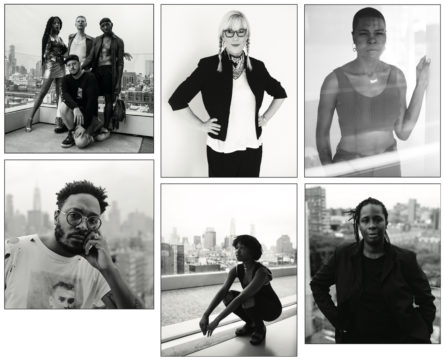
On a sweltering summer day in New York, we made our way to the New Museum’s sun-filled Sky Room, where we met some of the artists featured in the museum’s upcoming exhibition Trigger: Gender as a Tool and a Weapon, an investigation of gender’s place in contemporary art and culture. We sat down with a select few of the show’s nearly 50 artists to hear their origin stories, to discuss the complexity of the exhibition’s title and to ask how our future looks from where they’re standing.
We gathered a few friends of the magazine (Matthew Leifheit, Sam Gamberg and Cyle Suesz) to photograph this group of artists in the Sky Room at the New Museum before the opening of the exhibition.
The following is from the day we spent photographing them in August, 2017.
Portrait by Matthew Leifheit
MICKALENE THOMAS
“The collage element in my work mainly came from how I would see myself as not necessarily disenfranchised but pulled in so many different directions and trying to make sense of my own double consciousness. All these different worlds I’m living in: I’m a mother. I’m an artist. I went to Yale. I’m from a poor neighborhood. I’m black. I’m queer. It’s fractured, but it makes a whole image.
I think it’s important for me to have my work in conversation with other works so that young girls, when they see these images, they can see themselves. I think the power of seeing yourself is everything — that sense of validation.” …



